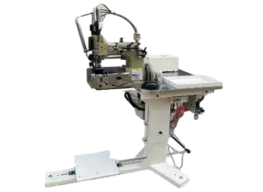two needle stitch
Exploring the Art of Two Needle Stitching
The world of sewing and stitching is rich with techniques that have been developed and refined over centuries. Among these techniques, the two needle stitch stands out for its versatility and unique aesthetic appeal. This method involves the simultaneous use of two needles and threads, allowing for intricate designs and robust seams. In this article, we will explore the fundamentals of two needle stitching, its applications, and its advantages.
At its core, the two needle stitch technique is simple yet effective. It requires two needles to be threaded through the same piece of fabric simultaneously. Often, this is achieved by using two threaded needles attached to a single thread spool, or two independent threads. The outcome of this method is a strong stitch that can withstand considerable strain, making it ideal for various sewing projects—from garments to upholstery.
One of the most popular applications of the two needle stitch technique can be found in the realm of garment making. This method allows for the creation of parallel rows of stitching, adding both structure and visual interest to clothing. Fashion designers often employ this technique to create unique patterns and textures that elevate their garments. For instance, contrasting thread colors can be used to produce striking designs that stand out on the runway or in retail settings.
In addition to its visual benefits, the two needle stitch provides a significant advantage in construction. When sewing heavy fabrics, such as denim or canvas, the two needle stitch helps distribute stress more evenly across the seam. This distribution not only increases the durability of the final product but also minimizes wear and tear on the fabric. As a result, garments constructed using this method are less prone to fraying and breaking, making them ideal for workwear and outdoor clothing.
two needle stitch

Another notable application of the two needle stitch is in the realm of quilting. Quilters often use this technique to create decorative elements on quilts, enhancing both the surface texture and overall design. The dual threads can be utilized to create intricate patterns or motifs that showcase a quilter’s creativity and skill. This technique also allows for precision stitching, necessary for achieving the crisp lines and shapes that characterize high-quality quilted items.
Beyond fashion and quilting, the two needle stitch proves invaluable in upholstery and home décor. Upholsterers employ this method to create robust seams on cushions, curtains, and other textile furnishings. The aesthetic of exposed stitching can add a rustic charm to home decor, appealing to those who appreciate a handcrafted look. By using contrasting colors, designers can highlight the stitching as a prominent feature rather than just a functional component.
Furthermore, the two needle stitch has gained popularity in the realm of embroidery. Combining embroidery with this technique allows artists to achieve depth and complexity in their designs. By varying tension and thread thickness, they can create stunning visual effects that capture the eye. Moreover, this method can be adapted to free-motion embroidery, offering more creative freedom and spontaneity in artistic expression.
Though the two needle stitch is a technique rooted in traditional sewing practices, modern adaptations and technological advancements have breathed new life into its applications. Today, many sewing machines come equipped with dual needle capabilities, simplifying the process and opening doors for hobbyists and professionals alike. These machines enable more intricate designs to be executed with greater ease and efficiency.
In conclusion, the two needle stitch is a versatile technique that enhances both the durability and aesthetic appeal of sewn items. Whether used in fashion, quilting, upholstery, or embroidery, its applications are vast and varied. As sewers and crafters continue to explore this method, it is likely that the two needle stitch will remain a cherished technique for generations to come, celebrating the art of sewing in all its forms. Its combination of strength, beauty, and creativity—qualities that are deeply valued in the world of textile arts—make it a fundamental skill for anyone passionate about sewing.
-
Boost Production Efficiency with a Pattern Sewing MachineNewsAug.29,2025
-
Industrial Excellence with the Best Heavy Duty Sewing MachineNewsAug.29,2025
-
Precision and Power with the Best Pattern Sewing MachineNewsAug.29,2025
-
Reliable Bulk Packaging Starts With the Right FIBC Sewing MachineNewsAug.29,2025
-
Advanced Packaging Solutions: Elevate Productivity with Jumbo Bag Sewing Machine and Industrial Stitching EquipmentNewsAug.29,2025
-
High-Performance Solutions for Bulk Packaging: FIBC Sewing Machine and MoreNewsAug.29,2025
-
Maximize Efficiency with an Industrial Cylinder Arm Sewing MachineNewsAug.28,2025


























